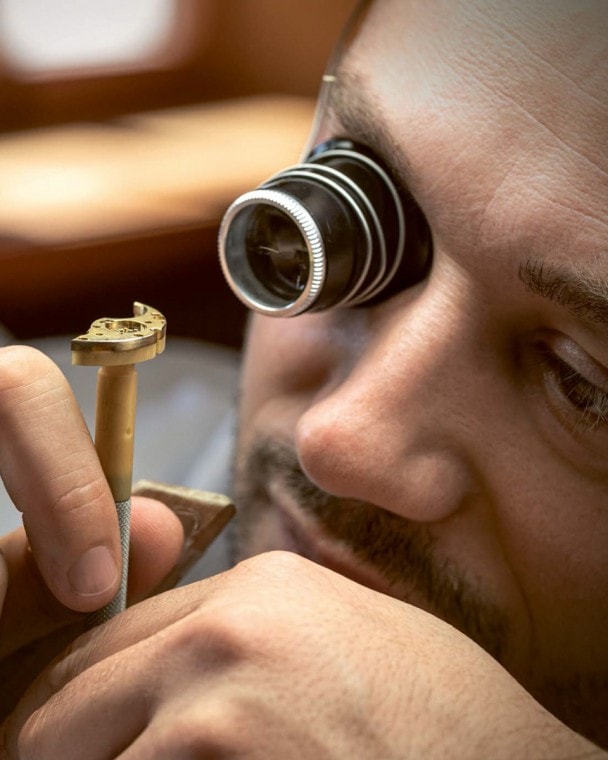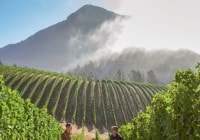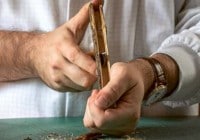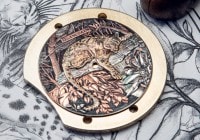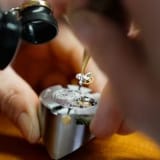
Search in Issues
Chapters
List of parts
Chapter 5
THE “YELLOW FAIRY” of the Swiss mountains
On the trail of an authentic watchmaking tool endowed with multiple virtues.

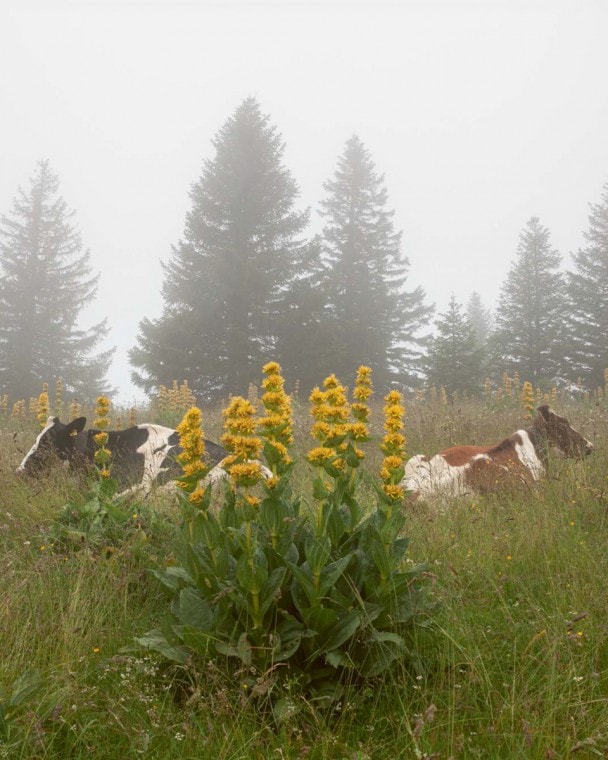
YELLOW GENTIAN Gentiana lutea Particularly prized for its roots, the yellow gentian, whose Latin name is Gentiana lutea, is a robust perennial plant typical of the mid-elevation mountains of central and southern Europe.
The Vallée de Joux looks like something straight out of a Grimm fairy tale. One enters another world when crossing one of the fir tree-lined passes leading to this valley that is inseparable from Swiss mechanical watchmaking. The Vallée de Joux is indeed often referred to as the cradle of prestige watchmaking. When the name of this idyllic region is mentioned, one immediately thinks of the ticking of watches and the inspiration instilled by the pervasive tranquillity of this place. Nonetheless, above and beyond what is commonly known about the Vallée de Joux, the region remains full of surprises. Lovers of authentic Swiss flavours are aware that it is home to delicious cheeses such as Vacherin Mont d’Or and Gruyère d’Alpage. Those who enjoy open-air activities appreciate the many marked trails and hiking paths. Where cows graze and sports enthusiasts exercise, a miraculous plant unknown to many also flourishes: the yellow gentian. Blancpain’s watchmakers, however, are aware of its qualities and value it as a true watchmaking tool.
A bucolic setting overlooking the village of Le Brassus is home to Blancpain’s manufacturing facility dedicated to fine craftsmanship as well as the creation of sophisticated horological complications. Its affectionate nickname, La Ferme, evokes Jehan-Jacques Blancpain’s farm in Villeret, above which the brand founder established his watchmaking workshop in 1735. Following in his footsteps, a dynasty of watchmakers has dedicated its life to the art and mechanics of time. Specialised craftsmen with a profound taste for fine workmanship, those who were known as the “farmerwatchmakers” found a real vocation in the production of watches. Today, the tradition continues with equal passion and hard work. Blancpain’s watchmakers safeguard the Swiss heritage and culture with the same authenticity. Just as their forebears did, they draw on the resources of their natural surroundings to practice their discipline in keeping with the purest traditions. On their workbenches, alongside the files, beading tools, burnishers, point gravers and burins used for finishing and decorating watch components, one also finds the great yellow gentian.
Typical of the mid-elevation mountains of central and southern Europe, the yellow gentian is a robust perennial whose stems can grow to over one metre in summer. During this period of the year, it enlivens the meadows of the Vallée de Joux with its brightly coloured star-shaped flowers. It has been regarded since antiquity as a medicinal ‘miracle’ plant and is believed to have countless healing properties. Yellow gentian, whose Latin name is Gentiana lutea, is thought to boast digestive, antiemetic, depurative, antiseptic, sialagogue, febrifuge and stomach-soothing properties, to name but a few. Also prized by distillers for several centuries, the plant is the magic ingredient of a bitter brandy made from its roots, which are usually pulled up in autumn.
In autumn, Blancpain’s watchmakers harvest the stems of the yellow gentian THAT WILL SERVE TO POLISH THEIR COMPONENTS.
Blancpain’s watchmakers harvest their gentians in the autumn. They do not make a therapeutic herbal tea from it, nor do they produce an aperitif or digestive alcohol, tempting as that may seem. Their interest in the gentian, also known as the “yellow fairy”, lies in its supple, resistant and dense stem, whose pith has a grain of a fineness ideal for polishing watch components. The roots are not removed during harvesting, so the gentian plants from which the wood is taken remain intact. In this way, Blancpain watchmakers show full respect for the resource and the natural environment.
The excursion through the high pastures in search of the “yellow fairy” begins near La Ferme in Le Brassus. After identifying the best candidates for the job, the watchmakers cut the selected plants at the base of their stems using a small hand saw, while breaking off the top to remove the uppermost cluster of flowers. The leaves are then detached and the branches assembled in bundles and tied together before being stored for several days in a dry place. Once the large yellow gentian has been thus prepared, Blancpain’s watchmakers proceed to cut the stems they will use at their workbenches. Using their hand saw and a mitre box, they cut 23 cm segments that they split into three lengthwise.
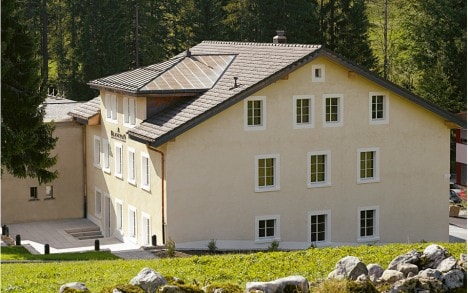
The Manufacture Blancpain affectionately nicknamed La Ferme, dedicated to creating Grand Complication and Métiers d’Art models.
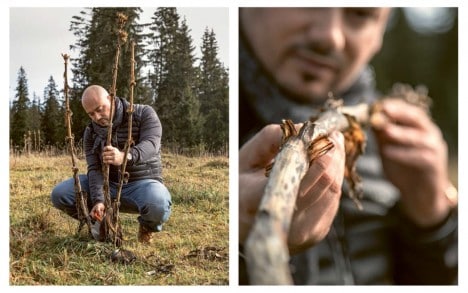
Harvesting and preparing yellow gentians.
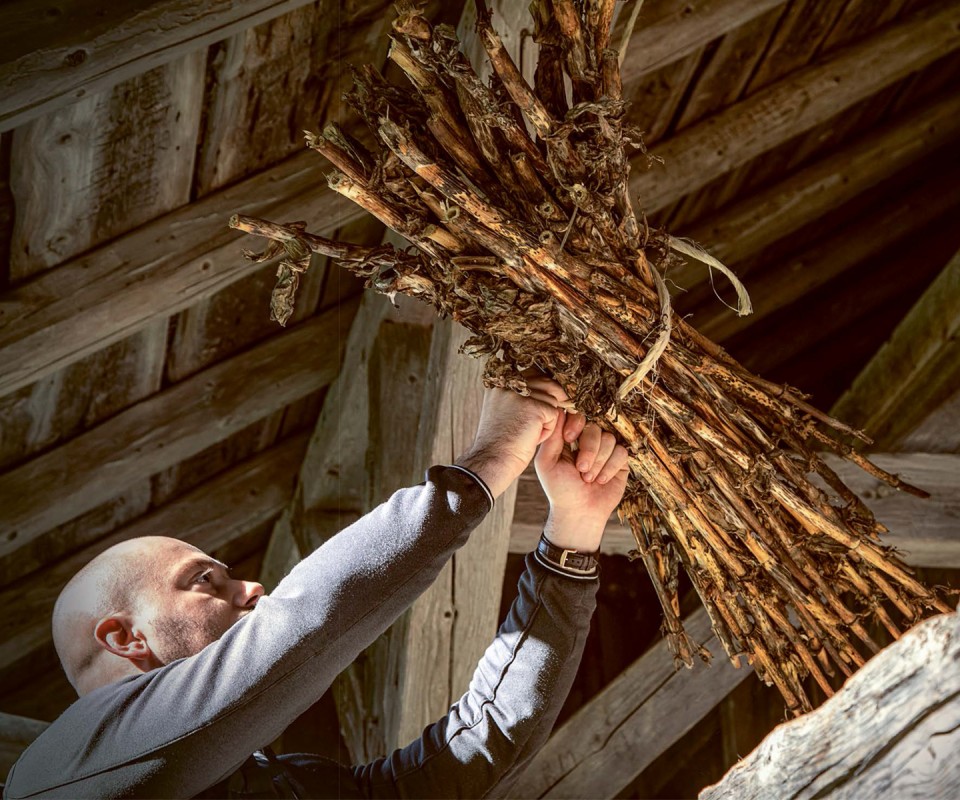
Yellow gentian branches are assembled in bundles and tied together before being STORED FOR SEVERAL DAYS IN A DRY PLACE.
The wood of the yellow gentian is cut into 23 cm SEGMENTS AND THEN SPLIT INTO THREE lengthwise.
Up to six pieces of wood can usually be obtained from one gentian stem. The yellow gentian wood prepared in this way is cut to form a sharp tip that is coated with a tiny amount of polishing paste called diamantine, mixed with a drop of essential oil, often lavender or sweet almond. Each artisan has their own secret recipes, based on their experience and the know-how that has been passed on to them, and adapts the ingredients as they sees fit depending on many factors – such as the quality of the gentian or the diamantine, or the humidity in the air. Once all the parameters have been adjusted, the watchmaker’s work can begin.
Gentian wood is used for bevelling (also known as chamfering), one of the major finishing decorations found on fine watch movements. This technique consists of enhancing the shapes of the components – particularly the plates, bridges and oscillating weights made of precious metal – by smoothing the sharp edges at a defined angle, usually 45°. It creates a play of light across the timepieces that reveals the beauty of the mechanical movements. The angles are generally rounded, outward or inward. The latter type is the most complex to achieve and can only be done by hand. Whatever the nature of the angles, Blancpain chooses to apply the artisanal method to its most refined timepieces.
Hand bevelling is a painstaking task that requires skill and time and is one of the most time-consuming watchmaking finishes, with some components taking more than a dozen hours to complete.
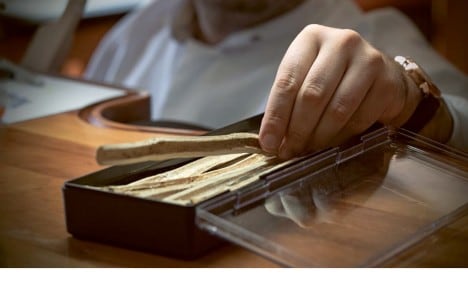
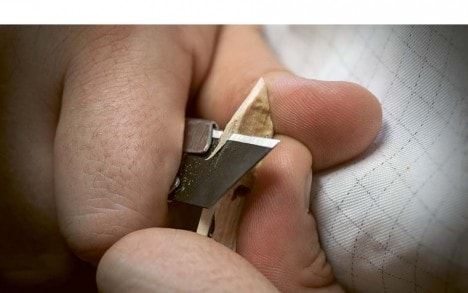
Preparing the tool destined to be coated with the diamantine powder-essential oil mixture.
Gentian wood ensures a level of polishing of exceptional quality THAT NO MACHINE IS CAPABLE OF ACHIEVING .
The process begins with the formation of the angles using various files. Any marks left on the parts are removed and the surfaces are smoothed and unified by operations performed using abrasive tools featuring varying degrees of graining. The last step is polishing, first with a buff covered with sandpaper, then with gentian wood complete with the diamantine powder-essential oil mixture. The tip of the tool is rubbed delicately and at length against the corners of the components until they reach the desired shine. Gentian wood ensures a level of polishing of exceptional quality that no machine is capable of achieving.
In the Blancpain workshops at La Ferme in Le Brassus, the human hand reigns supreme, just as it did for the first generations of watchmakers. When the artisans who create watches also create their tools, the French word manufacture (from the Latin for ‘making by hand’) takes on its fullest possible meaning.
